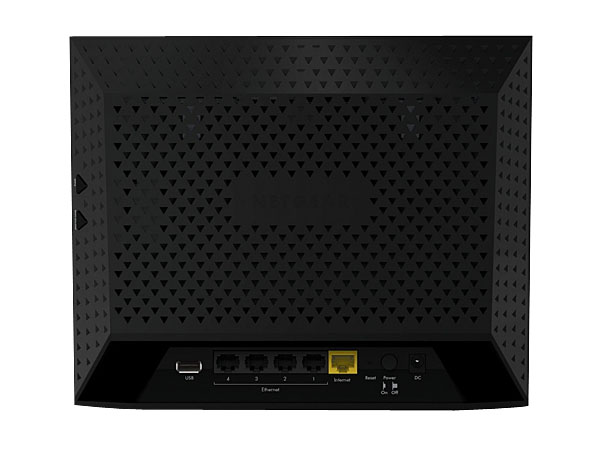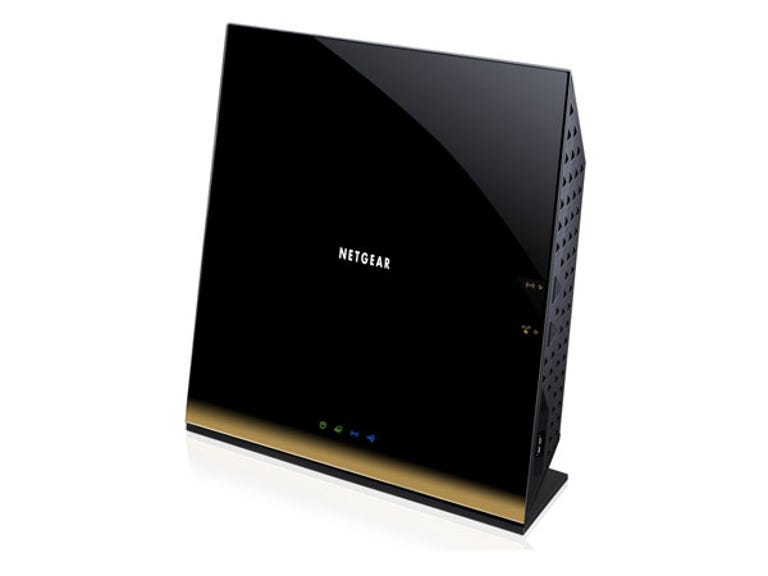 Why You Can Trust CNET
Why You Can Trust CNET Netgear R6300 review: Netgear R6300
The R6300 is quite a beast of a router, and it certainly gives a promise of things to come. While we score it highly, we'd hold off on purchasing anything 802.11ac until client chips are more widespread — by then, there'll likely be something even better around.
We thought Netgear's previous king of the hill, the WNDR4500, was physically big. The R6300 needs dedicated floor space, at a leviathan 205x255x77mm.
The Good
The Bad
The Bottom Line
It's no doubt this huge due to everything that's inside. Sure, it carries the usual 802.11n 2.4GHz and 5GHz frequencies, but this is Netgear's first 802.11ac router as well; the 5GHz standard that's being pitched to take over the Wi-Fi world. It runs all three simultaneously, supporting any client you may have.
It should be noted that the 802.11ac specification has not been ratified, and that vendors are jumping the gun with this one. While there is a chance that equipment could be released in the future that's not compatible with today's 802.11ac routers, various vendors have been making soothing noises about how that's not likely to happen, and they've learned their lesson since 802.11n.
We'd exercise caution; while the 802.11ac tech looks great, there are definitely caveats: no client device (laptop, mobile phone) yet contains an 802.11ac receiver, and USB dongles are only just starting to leak their way into the market. We also suspect that there'll be a few kinks to iron out before the spec goes final, so for now, treat it as a technology preview.
Specs at a glance
| Firmware tested | 1.0.2.26_1.0.26 |
|---|---|
| ADSL2+ modem | No |
| Annex M | N/A |
| 3G modem | No |
| IPv6 | Yes |
| Wireless protocols | 802.11b/g/n/ac |
| Dual band | Simultaneous |
| Highest wireless security | WPA2 |
| WDS | Yes |
| Ethernet ports | 4x gigabit, 1x gigabit WAN |
| USB print sharing/storage | Storage, printer |
| Accessories | Ethernet cable, installation CD |
Connections

There's another USB port on the left edge.
(Credit: Netgear)
Gigabit WAN and four gigabit Ethernet ports are the stable for top-end routers these days, while two USB ports can handle USB storage and printers. There are two push buttons on the side, offering a hardware on/off switch for Wi-Fi, and the obligatory WPS button.
UI and features
Netgear's "Genie" UI hasn't changed since the WNDR4500. It attempts to provide "at a glance" information, although graphics have been severely over-optimised and dithered over.
Netgear now places its help menu in a bar along the bottom -- click it and it pops up, overlaying the settings screen. While the help is related contextually to the current screen, there are huge amounts of information here, with only a tiny viewing box, resulting in a massive scroll bar.
The separation into "Basic" and "Advanced" settings is expected; however, Netgear hasn't really thought things through, providing an "Advanced Setup" section within the advanced tab. We can only assume that it's for advanced-advanced users. Similarly, we're at a loss as to why "Setup Wizard" is in the advanced section, or why you have to bounce between two different sections to access all of the wireless settings.
While the R6300 clearly has quite a bit of grunt inside, there are still periods where changing a setting takes an inordinate amount of time, and it's clear that the router is being rebooted, rather than just, say, the network stack.
The usual smattering of features are here; we're told that with the earlier US release, guest networks didn't make the cut, but firmware updates have since reinstated the feature.
You can also record the amount of internet traffic through the router, if you wish, allowing you to disconnect the internet or make one of the lights on the router flash orange once the limit (MBs or hours) has been reached. Those on TB plans will be out of luck here; the limit only supports six digits, locking you to a maximum of 999,999MB. We'd love to see Netgear go one step farther, and throttle connections based on a MAC address or refuse internet access to certain MACs should they exceed a preset, per-MAC limit.
Netgear has also released a Genie app for iPhone and Android. It's not as far reaching as Cisco's Connect Cloud, and it's only able to manage the router if you're on the same subnet -- that means no off-site management is possible without futzing with VPNs. We also found that throughout use, we were looking at a "waiting" graphic more often than we were actually configuring.
Technically, you should be able to configure your router out of the box with the phone, as it ships with Wi-Fi on and an auto-generated SSID and WPA2 password, which are both listed on a sticker on the router. You can then change your SSID, password or Wi-Fi channel through the app.
You can also manage guest access, and there's a network map, too. The latter looks cool, and it does let you know who's connected -- but you can't do anything useful with it, like throttle individual devices or simply kick them off the network altogether.
Parental controls only work if the router is online, and need you to sign up to the OpenDNS service to manage them. There was also another option called "Access Control", but all it ever did on our Android phone was show a loading screen; it never managed to open the section. It's clear that Netgear has some work to do here.
Performance
After analysing the spectrum with InSSIDer, an empty channel of either 1, 6 or 11 is chosen for 2.4GHz wireless testing. Usually, the router is restricted to the 20MHz band if the option is available.
We use iperf to determine throughput, running eight streams with a TCP window size of 1MB and an interval of one second. The test is run for five minutes in three different locations on two separate occasions. The locations are in the same room as the router: one floor down around spiral stairs and with concrete walls and floors, and two floors down under the same conditions.
The wireless throughput is tested using three chipsets (the Atheros AR5008X, Ralink RT2870 and Intel Ultimate-N 6300), and then all results are averaged.
The R6300 pulls impressive scores in our second test location, outstripping the competition. It's still competitive in our other test locations, too.
Here, some explanation is warranted. The bridged entry shows 802.11ac performance when bridged to another Netgear R6300 router, which is then connected via Ethernet to a laptop. The results are an extremely promising indication of what 802.11ac performance will be like compared to current 802.11n 5GHz. What's even more interesting is the range; our third location is particularly difficult for 802.11n 5GHz, with most laptop adapters failing to see the SSID or not connecting. The bridged routers not only blow away the 5GHz score, but the 2.4GHz as well.
This, of course, comes with caveats: the whole point of being wireless is, well, being wireless, and bridging a router and connecting over Ethernet isn't that, nor is it pragmatic. It's not going to make your current gear faster, either; you'll need an 802.11ac adapter in your laptop, phone or tablet to take advantage of this new speed. It comes with two issues: they don't exist yet, and they'll likely be significantly slower than this bridged connection. Still, the potential for wireless HD, high-bitrate video streaming over decent distances is there.
In standard 802.11n 5GHz, the R6300 also manages to perform reasonably well.
Warranty
Netgear covers the R6300 with a two-year warranty.
Conclusion
The R6300 is quite a beast of a router, and it certainly gives a promise of things to come. While we score it highly, we'd hold off on purchasing anything 802.11ac until client chips are more widespread -- by then, there'll likely be something even better around.



